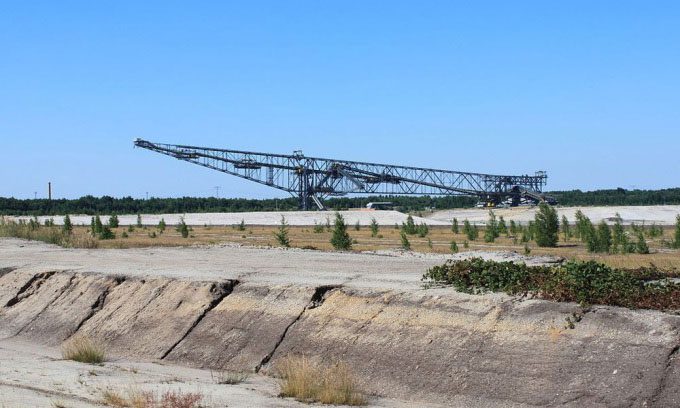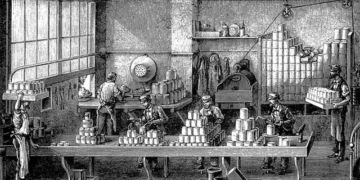With a length of 502 meters and a weight of 13,600 tons, the F60 conveyor bridge is even more massive than the famous Eiffel Tower.

The F60 conveyor bridge is 502 meters long and 80 meters high. (Photo: LutzBruno/Wikimedia Commons)
The colossal steel F60 conveyor bridge in Lower Lusatia, Brandenburg, Germany, is one of the largest and longest industrial machines that can move in the world.
This conveyor bridge is used in mining to remove overburden (the top layer of soil and rock that needs to be moved to access the coal or ore below) and deposit it in the waste area of open-pit mines. The F60 is the last of five similarly sized conveyor bridges manufactured between 1969 and 1991. Four of these are still in operation at the lignite mines in Lower Lusatia, while the F60 has been preserved as a tourist attraction.
The F60 measures 502 meters in length and stands 80 meters tall. Due to its large size and the shape of its steel framework, the F60 has earned the nickname “the horizontal Eiffel Tower.” In fact, if the Eiffel Tower were placed next to the F60, it would be completely overshadowed, as it only reaches about 330 meters in height. The F60 is also significantly heavier, weighing 13,600 tons compared to the Eiffel Tower’s steel framework, which weighs around 7,300 tons. This makes it one of the heaviest land vehicles ever constructed, second only to the gigantic bucket-wheel excavator Bagger 293, which weighs 14,200 tons.
During its operation, the F60 worked alongside two bucket-wheel excavators, collectively digging and moving 29,000 cubic meters of waste material per hour, which corresponds to a weight of 50,000 tons. Despite its enormous size, the F60 is very efficient, requiring only 1.2 kWh of electricity to collect, transport, and dump one cubic meter of waste material.
The construction of the F60 began in 1988, and the machine became operational in 1991. Just 13 months later, the mine was closed, and the German federal government requested the area to be rehabilitated. The initial plan was to dismantle the F60, but it was later preserved as a tourist attraction.


















































